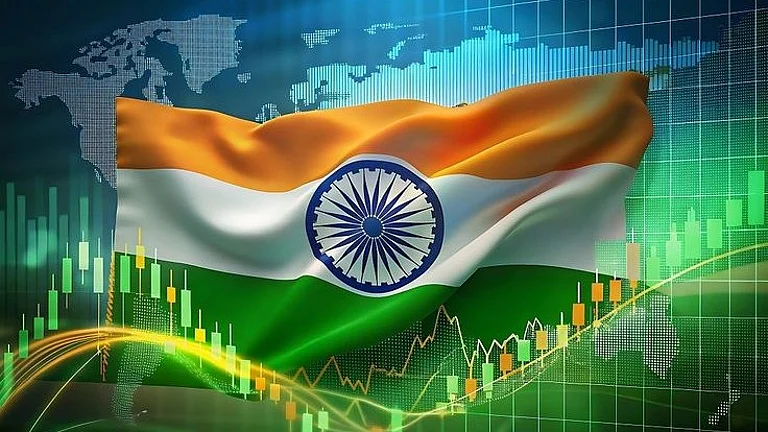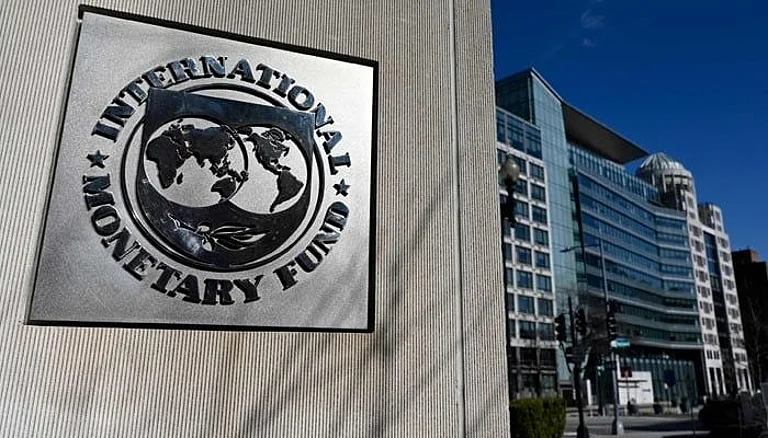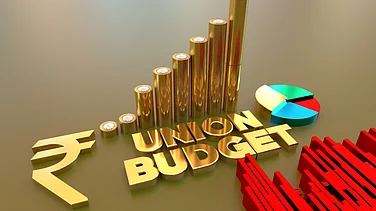As the Prime Minister Narendra Modi-led government prepares to enter the electoral battlefield against the giant opposition alliance of 26 parties in 2024, it will start counting its achievements over the past 10 years. One of them, according to the Centre, has been the rapid decline of poverty. This has been backed by working papers published by the International Monetary Fund (IMF) and World Bank.
The IMF working paper on poverty released last year had painted a rosy picture on India’s fight against poverty. Authored by noted economist Surjit Bhalla and others, the paper claimed that India made substantial progress in the last decade, nearly eliminating extreme poverty. The claim was subsequently backed to a certain degree by a paper released by the World Bank. However, a new paper authored by economists Rishabh Kumar and Maitreesh Ghatak has raised questions about the calculations made by researchers in working papers published by the IMF and the World Bank.
Bhalla et al had claimed that before the eve of the pandemic, India had nearly eradicated extreme poverty. As per their estimates using uniform recall period, the population living in extreme poverty went down from 21-22 per cent in 2011-12 to 3-4 per cent by 2019. Mixed modified recall period used by Bhalla et al showed poverty between 1-2 per cent in 2019. Another study by Roy Sinha and Van der Weide, published around the same time as the Bhalla et al study as a World Bank working paper, estimated the poverty to be slightly higher at 9-12 per cent, but still suggesting that poverty declined sharply over the last decade.
Kumar and Ghatak in their new paper argue that in absence of the consumption expenditure survey published by the NSO, which has not been released since 2011-12, both the papers rely on “synthetic methods” to arrive at the conclusion. As per their calculations and arguments, both the papers rely on assumptions and alternative data sources that raise questions on their conclusions.
Presenting statistics like low growth in states with higher population living in poverty, rise in self-employment, and stagnant share of agriculture in the GDP, the authors suggest that extreme poverty was higher than the estimates of IMF and World Bank, which in turn raises the question on Modi government’s claim of lifting poor out of extreme poverty.
Questioning The Estimates
Arguing against the estimates of Bhalla, the authors put forward three objections. As per them, the reliance of their estimates on national accounts (NAS) data, assumption of 100 per cent pass-through from NAS to surveys, and the use of an uniform growth rate for all households raised questions about the low estimate of poverty.
They note in their paper, “For Bhalla’s estimate to be accurate, first there needs to be a 100 percent pass-through in the growth rate from national accounts to surveys.” An estimate of pass-through rate cited by them was 67 per cent. The authors also write that NAS uses several imputed items to calculate growthin consumer expenditure for which there isn’t any cash flow basis in household-based surveys.
The criticism of Bhalla’s estimates was partly addressed by a subsequent World Bank paper written by Roy Sinha and Van der Weide. They bypass using NAS statistics and instead use household data from a different source. Their paper utilized the consumer pyramids household survey (CPHS) published by Centre for Monitoring Indian Economy. (CMIE) Sinha and Weide calculated poverty by reshaping the weights of CPHS to mirror NSO’s CES. Their estimates pegged poverty at 9-12 per cent between 2017-19.
The core contention with their estimates, as per Kumar and Ghatak, was that it relied on CPHS which falls short of national standards of CES, a point that has been made by economists such as Jean Drèze and Anmol Somanchi. In particular, CMIE’s survey undercounts the poor population, which makes it problematic for using to estimate poverty.
The authors note that as these are synthetic estimates, they need to be backed by external evidence. “Does the poverty decline agree with the structural transformation of the Indian economy since 2011-12? Or was economic growth strong enough in regions with the highest poverty rates?” they ask.
A Worrying Picture
In their paper, the authors test the claim of reduction in extreme poverty by looking at the growth rates and other economic indicators. As per the analysis of per capita income growth of Indian states, it was observed that rich states like Karnataka and Gujarat saw 6-8 per cent growth while poor states like UP and Bihar grew at least 2-3 per cent less.
With a heavy concentration of poverty-stricken population living in poor states, the authors argue that the slow growth rate and lack of convergence between rich and poor states don’t point towards an aggregate decline of poverty.
The paper also points out that in other countries like Bangladesh, Vietnam and China, there is a strong correlation between the reduction in agriculture’s share in GDP and decline in headcount poverty. However, in India’s case, the authors say that according to the synthetic estimates, poverty declined by 40 percent at the same agricultural share of GDP. The data was based on the World Bank’s own data.
As per Kumar and Ghatak’s argument, the agriculture’s share in GDP data suggest that India’s headcount poverty should be 5-6 per cent higher than what was being estimated by World Bank.
Noting the high share of self-employed workers in India’s workforce, pegged at 57.3 per cent according to latest periodic labour force survey report, the authors say that the World Bank significantly underestimates poverty in India. As per their calculations based on self-employment and agriculture share data, the World Bank’s current headcounts appear to be strongly underestimating poverty.
So, What’s The Real Poverty Rate?
The authors answer the question using official data available on wages and consumption. Combining the NSO’s 2011-12 CES and employment-unemployment surveys, the paper generates poverty estimates for recent years by benchmarking to the newer PLFS survey. Kumar and Ghatak also utilise some data available from the leaked 2017-18 CES which was not released by the government.
The estimates based on their calculations paint a worrying picture. Contrary to Bhalla’s assertion, their paper claims that the percentage of population living in extreme poverty in 2019 was around 20 per cent. The stark divergence in calculations of the noted economists poses a question of whether India’s fight against poverty hit a major roadblock between 2011-19.
World Bank data cited by the authors also show that overall income growth slowed down in 2010s. While per capita income increased by 1.8 times in the 1990s and 2 times in the 2000s, it slowed down to increase by 1.5 times in 2010s. This suggests a massive deceleration in the last decade, aligning with the structural slowdown in growth. By 2019-20, India’s GDP growth had slowed down to less than 4 per cent.
Kumar and Ghatak have tried to paint the true poverty picture. The authors have stressed their calculations are not the final word on the great poverty debate. Their estimates are also synthetic but are based on official and nationally representative survey data. The government can put the debate to rest if it releases the official consumption survey data and reveals the true picture of poverty in the country. But with the 2024 elections just around the corner, will the true poverty picture aid or hurt the claims of Modi government?































